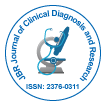Research Article
Detection of High Prevalence of TEM/SHV/CTX-M Genes in ESBL Producing and Multidrug Resistant Klebsiella Pneumoniae and Klebsiella Oxytoca
Diagbouga S1,2*, Salah F D1, Sadji A Y3, Dabire A M1, Nadembega C1, Kere A B3, Soubeiga S T1, Ouattara A K1, Zohoncon T1, Belemgnegre M1, Karou S4, and Simpore J11Department of Biochemistry-Microbiology, University of Ouaga I Prof Joseph Ki-Zerbo, BP 364 Ouagadougou, Burkina Faso
2Research Institute for Health Sciences (IRSS), 7192, Ouagadougou, Burkina Faso
3Bacteriology Laboratory, National Institute of Hygiene (INH), 1396, Lomé, Togo
4School of Biological and Food Technique (ESTBA), University of Lomé, 1515, Togo
- Corresponding Author:
- Serge Diagbouga
Department of Biochemistry-Microbiology
University of Ouaga I Prof Joseph Ki-Zerbo
BP 364 Ouagadougou, Burkina Faso
Tel: 00226 70 23 17 96
E-mail: diagbouga.serge@gmail.com
Received Date: August 19, 2016; Accepted Date: October 04, 2016; Published Date: October 08, 2016
Citation: Diagbouga S, Salah FD, Sadji AY, Dabire AM, Nadembega C, et al. (2016) Detection of High Prevalence of TEM/SHV/CTX-M Genes in ESBL Producing and Multidrug Resistant Klebsiella pneumoniae and Klebsiella Oxytoca. J Clin Diagn Res 4:130. doi: 10.4172/2376-0311.1000130
Copyright: © 2016, Diagbouga S, et al. This is an open-access article distributed under the terms of the Creative Commons Attribution License, which permits unrestricted use, distribution, and reproduction in any medium, provided the original author and source are credited.
Abstract
Background: Klebsiella spp. are Enterobacteriaceae frequently isolated from pathological specimens during urinary tract infections, bloodstream infection, and pus. They are becoming more and more resistant to antibiotics and challenging treatment options. β-lactamases are a great variety of enzymes capable of inducing resistance to β- lactams. The objective of this study was to identify extended-spectrum-β-lactamase (ESBL) genes in Klebsiella spp. strains isolated from various specimens in Lomé, Togo. Methods: Sixty-four strains of Klebsiella spp. were isolated from different pathological specimens. They were then further characterized and tested against 3rd generation cephalosporin (ceftazidime, ceftriaxone, cefotaxime) and aztreonam. The detection of blaTEM, blaSHV and blaCTX-M was performed on these strains using simplex and multiplex PCR techniques. Results: Fifty five (85.94%) Klebsiella pneumoniae and 9 (14.06%) Klebsiella oxytoca were isolated. These strains derived from urine (n=33; 51.56%), vaginal swabs (n=21; 32.81%), pus (n=8; 12.5%) and sperm samples (n=2; 3.13%). All strains were resistant to cefepime. The resistance rate to other β-lactams was 29.69% (19/64) for piperacillin-tazobactam, 23.08% (12/52) for cefoxitin and 1.56% (1/64) for imipenem. Other inactive antibiotics were trimethoprim-sulfamethoxazole 96.72% (59/61), doxycycline 92.06% (58/63), ciprofloxacin 90.63% (58/64), nalidixic acid 80.95% (51/63), chloramphenicol 77.42% (48/62) and gentamicin 76.69% (51/64). Amikacin and fosfomycin remained the most active antibiotics with 1.56% (1/64) and 4.69% (3/64) resistance rates respectively. ESBL genes were detected in 63/64 (98.44%) strains. TEM/SHV/CTX-M was predominant 61.90% (39/63) followed by TEM/SHV 20.63% (13/63), SHV/CTX-M 11.11% (7/63), TEM/SHV 4.76% (3/63) and TEM 1.59% (1/63). Conclusion: ESBL genes occur more by combination 96.88% (62/64) than singularly 1.59% (1/63). These strains were also very resistant to quinolones and trimethoprim-sulfamethoxazole. These findings are of high importance in a medical and scientific perspective and may motivate decision makers towards a better monitoring and control of antimicrobial resistance in Togo.

 Spanish
Spanish  Chinese
Chinese  Russian
Russian  German
German  French
French  Japanese
Japanese  Portuguese
Portuguese  Hindi
Hindi